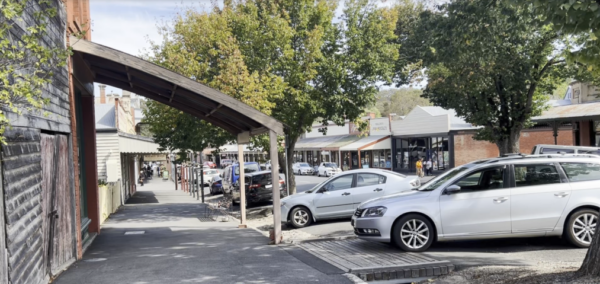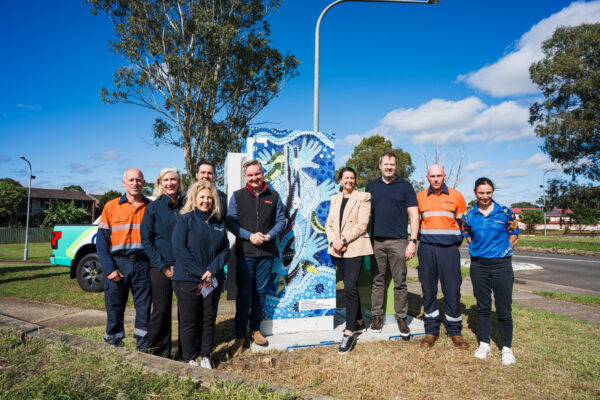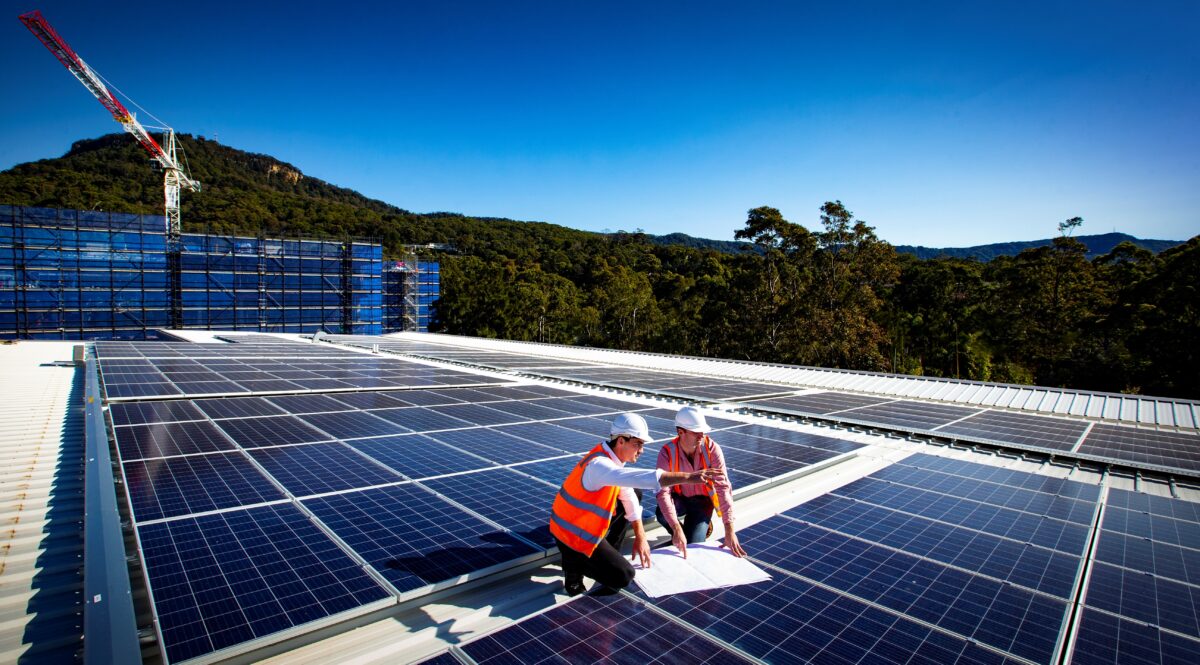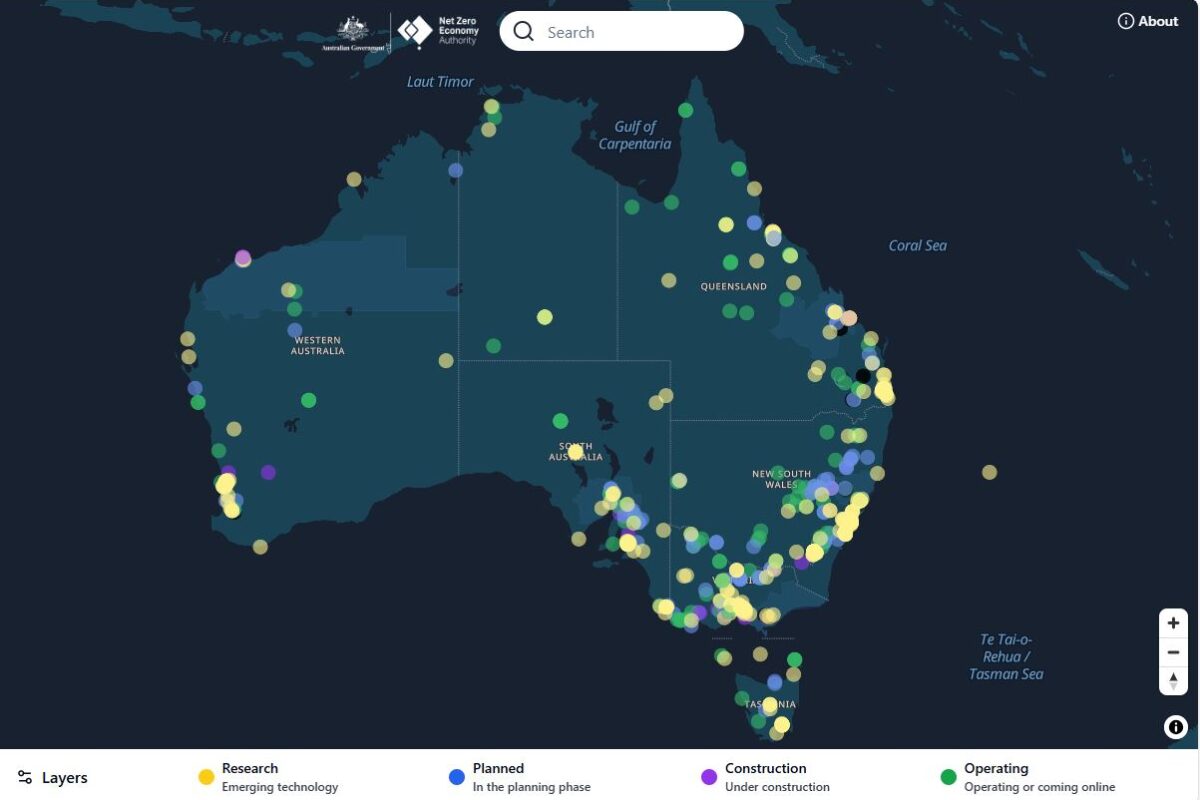Over 30 community batteries have been announced in New South Wales (NSW) and Victoria since 1 April 2025, backed by federal government grants as part of its $200 million community battery for household solar (CBHS) program deployment of 400 community batteries nationwide.
In late March, the Australian Renewable Energy Agency’s opened a $46.3 million (USD 27.6 million) Round 2 from its $171 million community battery funding scheme, which in total will stimulate the build of 342 of the government’s 400 neighbourhood battery energy storage systems (BESS).
The latest rollout are recipients of ARENA’s Round 1 funding, the CBHS Business Grants Hub (BGH) Stream 1, and the Victorian government’s $42 million 100 Neighbourhood Batteries Program.
Momentum Energy – University of Wollongong, NSW
Renewable energy generator Hydro Tasmania’s Melbourne-headquartered subsidiary Momentum Energy is coordinating the rollout of 10 batteries at two University of Wollongong (UOW) campuses funded by the ARENA’s Community Batteries Round 1 advancing renewables program.
With a combined capacity of 2 MW and a storage duration of two hours, the batteries will help power research laboratories, medical research and teaching facilities, while reducing the university’s electricity costs.
The batteries will also unlock an income stream by connecting the battery project to Hydro Tasmania’s virtual power plant (VPP), allowing excess solar or grid energy to be stored and sold into the National Electricity Market (NEM), when needed.
Powercor – Maldon, Victoria
Under the CBHS Business Grants Hub (BGH) Stream 1, Victorian electricity distribution company Powercor received $500,000 (USD 300,000) to install a 100 kW / 290 kWh community battery at the Victorian town of Maldon, 145 kilometres northwest of Melbourne.
Construction of the ground-mounted battery is due to begin in May 2025, and be operating within two months.
It will consist of three cubicles (two for the battery bank and one for the controls) on a concrete base, measuring approximately 2.5 metre long, 1.1 metre wide, and 2.1 metre high.
The battery will supply up to 50 nearby properties during peak periods for up to three hours, allowing locals to share more of their excess solar.
Powercor Head of Network Program Management Andrew Bailey said the site chosen as most suitable was based on feedback from neighbouring properties, the visual impact and reliability benefits it would deliver for the local electricity network.
Around 39% of residential customers in the Maldon region have rooftop solar installed, above the network average of 28%.

Image: Powercor
Endeavour Energy
Also, under the BGH Stream 1, NSW distribution network operator Endeavour Energy received funding for 31 community batteries in Western Sydney, which were launched on 1 April 2025.
Almost $100,000 in funds through the CBHS scheme has been provided for a 100 kWh battery in the suburb of Bidwill, $177,355 for a 270 kWh system in Blaxland, $500,000 for a 1,065 kWh system in Cabramatta and $500,000 for a 765 kWh system in Hobartville.
Endeavour Energy’s Chief Customer and Strategy Officer Leanne Pickering said to support the continued growth in household rooftop solar, it’s essential Endeavour captures and stores the clean energy for the 1,200 households benefiting from the batteries, to use when they need it.
“It will play a key role in the effective and fair energy transition we’re working toward,” Pickering said.
In the longer term, Endeavour Energy will roll out 76 batteries across 33 suburbs within its network.

Image: Endeavour Energy
Bonnie Doon, Victoria
The Mayfield Shire has secured funding for battery storage and solar at a local recreation reserve as part of Round 2 of the Victorian government’s $42 million 100 neighbourhood batteries program (NBP).
The project is being funded as part of a joint initiative led by the Central Victorian Greenhouse Alliance (CVGA) in partnership with 10 councils across regional Victoria, with support from the Goulburn Murray Climate Alliance (GMCA).
Mansfield Shire has experienced multiple storm and fire events in recent years, resulting in extended grid outages prompting the need to establish an energy resilient hub.
An energy backup system comprising of a 25 kW / 50 kWh battery and additional 8 kW solar system installed at the Bonnie Doon Recreation Reserve will future proof the site as an energy resilient hub for residents to access in the event of an extended grid outage.
The proposed system is expected to provide up to three days backup for critical power and lighting circuits from the battery, with capacity to charge from solar in island-mode to extended backup power duration if required.
This content is protected by copyright and may not be reused. If you want to cooperate with us and would like to reuse some of our content, please contact: editors@pv-magazine.com.









By submitting this form you agree to pv magazine using your data for the purposes of publishing your comment.
Your personal data will only be disclosed or otherwise transmitted to third parties for the purposes of spam filtering or if this is necessary for technical maintenance of the website. Any other transfer to third parties will not take place unless this is justified on the basis of applicable data protection regulations or if pv magazine is legally obliged to do so.
You may revoke this consent at any time with effect for the future, in which case your personal data will be deleted immediately. Otherwise, your data will be deleted if pv magazine has processed your request or the purpose of data storage is fulfilled.
Further information on data privacy can be found in our Data Protection Policy.